Gaining Experience and Experiences in the Interactive Ecology Course
The fall of 2018 found Brett Hall winding down the steep cliffs to a fairly secluded beach with fellow surfer Jonathan Robbins. This wasn’t your typical surf trip – though surfing the big, perfect waves was a must. Brett, California Native Plant Program Director at the UC Santa Cruz Arboretum and Botanic Garden (the Arboretum), was leading Jonathan and other students along the beach to learn the plants and geology of the area, as part of the Interactive Ecology internship run by the Arboretum.
The course, offered quarterly by the University of California Santa Cruz, is also part internship and emphasizes field experiences that enable students to see and learn in person about the variety of plant communities in the state. And, if some great surf can be enjoyed after checking the shore for coastal endemics, all the better!
To be sure, Jonathan wasn’t in the course for the surf. That fall was actually his second quarter taking the internship course – he was an earnest student who had signed up for the remaining quarters that year. He also completed his senior exit project with the Arboretum, developing a high school science class curriculum that follows the approach of the Interactive Ecology internship course to teach the ecosystems of California.
Hundreds of students have come through the Interactive Ecology program over the past 15 years, averaging about 10 per quarter. Many, like Jonathan, choose to take the class through multiple quarters and possibly beyond. The nature of the Arboretum’s work provides variety with each quarter, as projects, phenology, and seasonal needs all carry new learning opportunities. The goal of the program is to teach as much botany as possible to students – plant identification, ecology, how to conduct vegetation surveys, horticulture, and seed conservation are all covered.
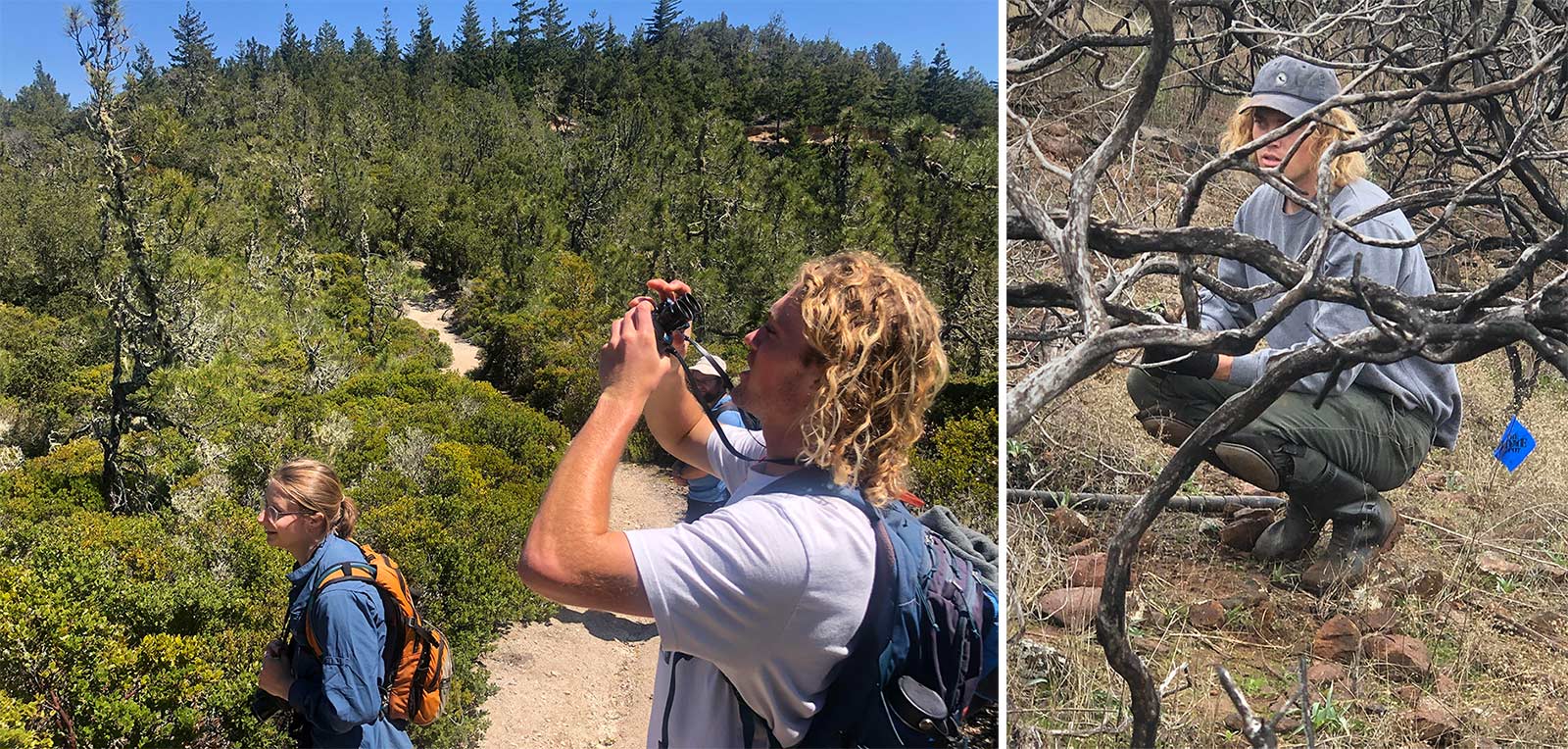
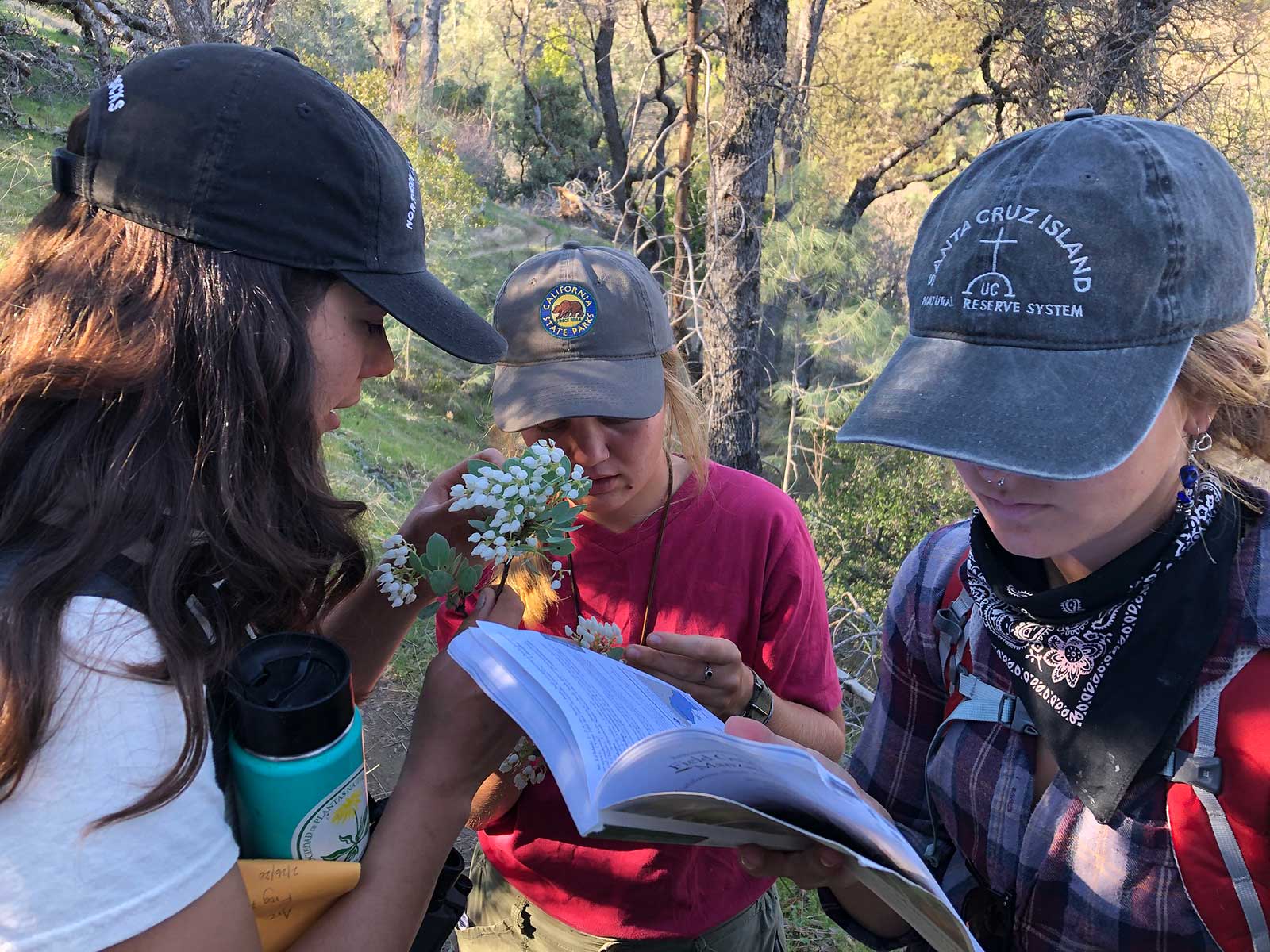
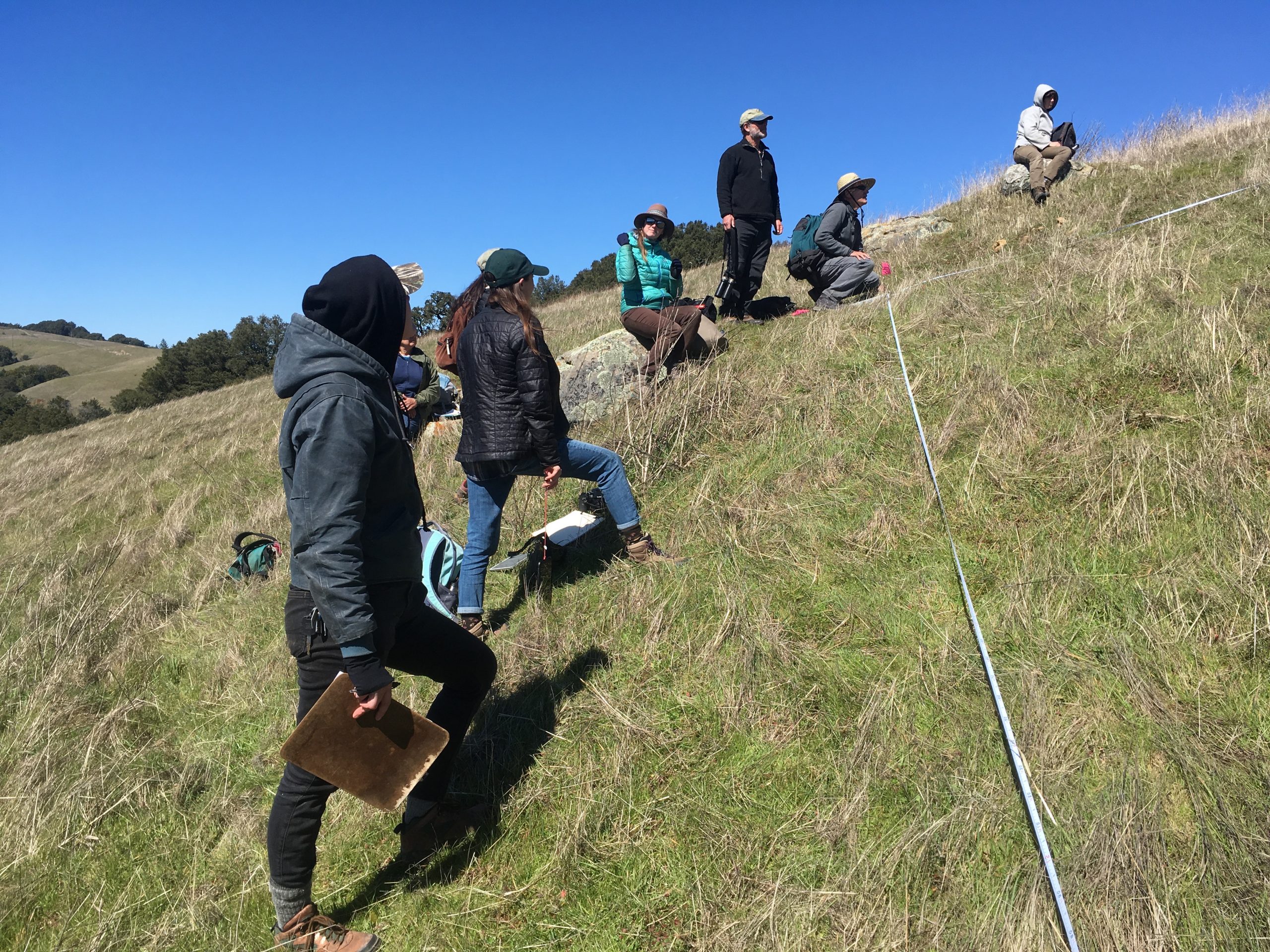
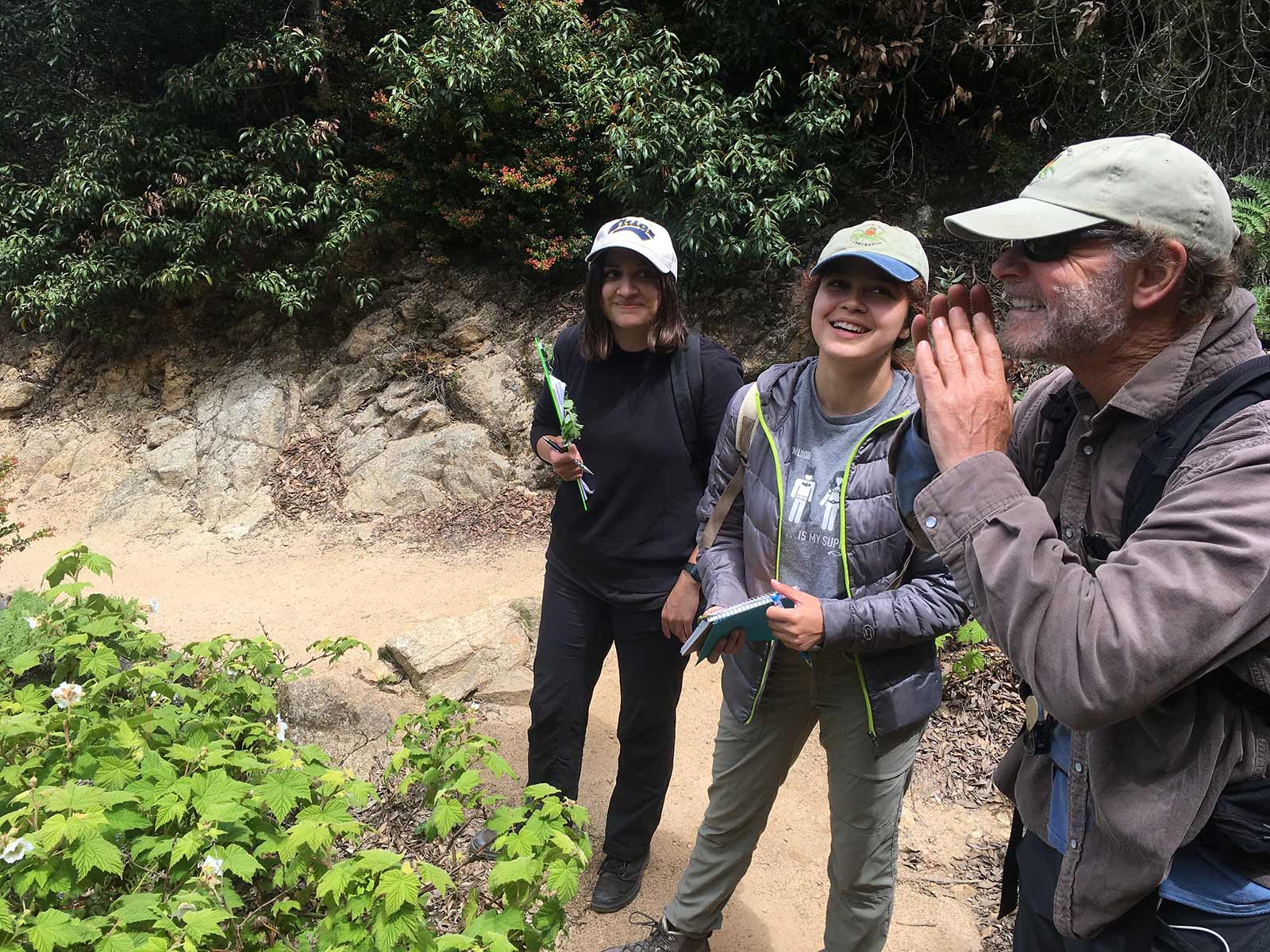
Academic learning is united with hands-on learning, as each crop of interns works with a faculty advisor as well as with Brett. Horticulture is taught through an eco-framework that covers biogeography. Students can take the course for 2-5 units. The 5-unit option gives them 15 hours to spend on the subject, largely at the garden or in the field. This wealth of time has allowed the cohorts of students to take on large projects.
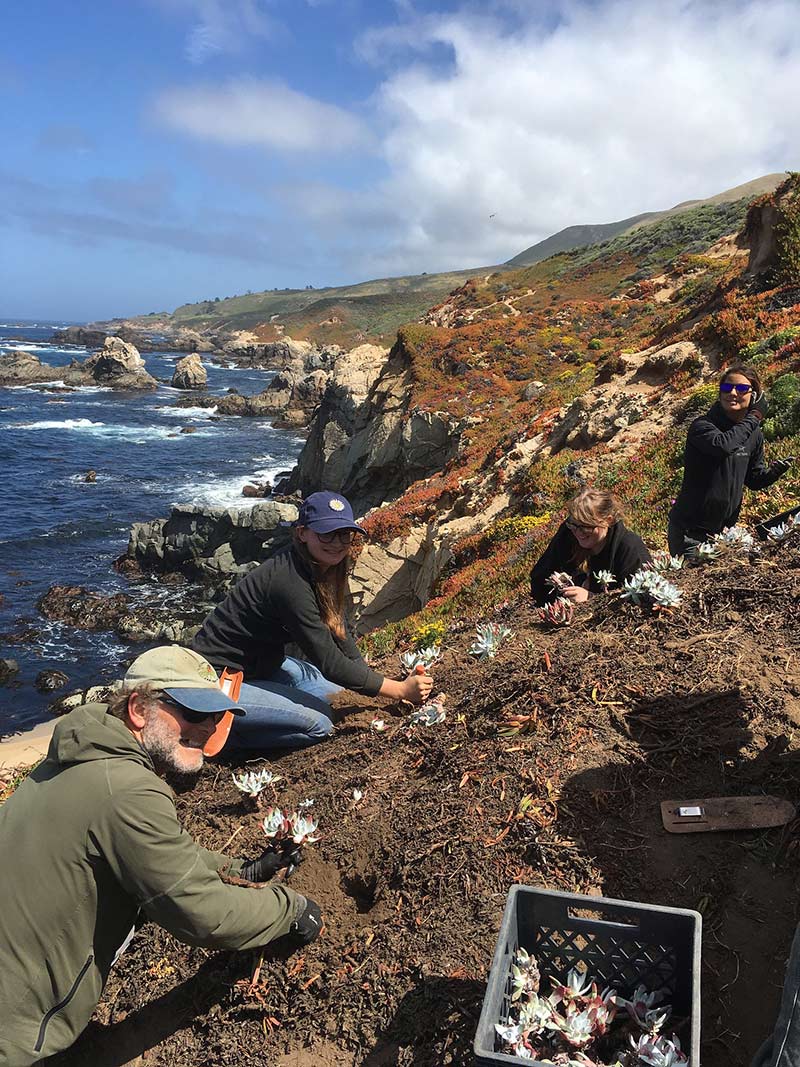

Intern accomplishments include the completion of more than 50 surveys for California’s Vegetation Classification and Mapping Program (VegCAMP), a program of the California Department of Fish and Wildlife (CDFW) supported by the California Native Plant Society (CNPS). Covering land from Golden Gate Park in San Francisco through San Mateo County to the south, the students spent weeks collecting data and performing the data entry and clean up needed to drop it into the project’s assessment format. Students have also collected seed for the BLM at the Pine Hill Preserve in El Dorado County, east of Sacramento. Using collected seed, they’ve worked to grow hundreds of plants for reintroduction in areas impacted by powerlines. These successful projects have given the students a sense of accomplishment as they learn about the state’s plants.
It’s not hard to see the benefits of the Interactive Ecology course for the Arboretum. The program allows the organization to expand its conservation work. The interns’ work has established a reputation for the program and earned contracts for the Arboretum that help legitimize the program. It has also given the Arboretum staff an opportunity to work with enthusiastic youth, providing renewed motivation. “They make us think about the future even more,” reflects Brett. “Our work seems even more vital and important when we are working with the people who will be living in the world we leave behind.” The students are bright and eager to contribute to making a safer future for plants.
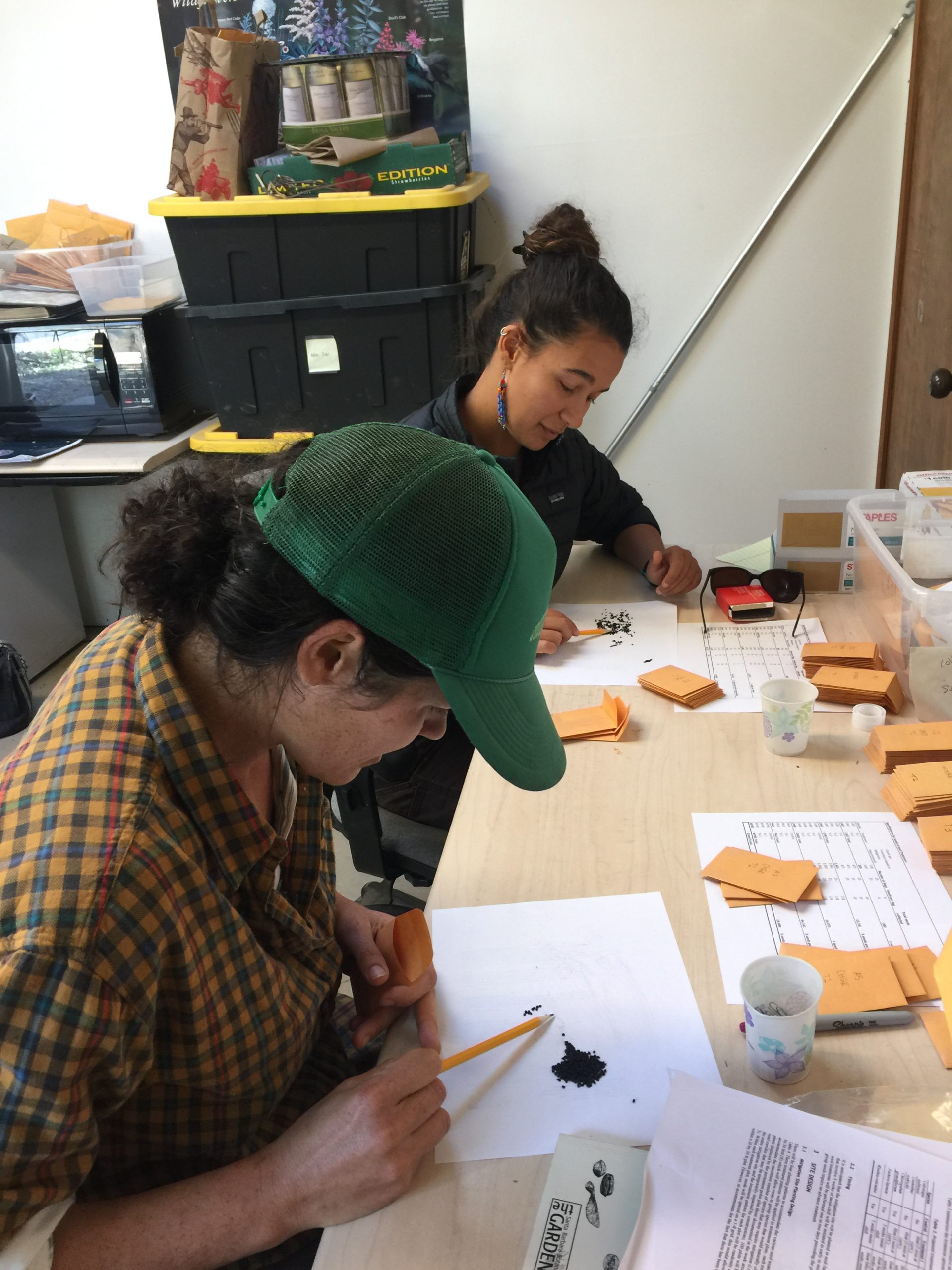
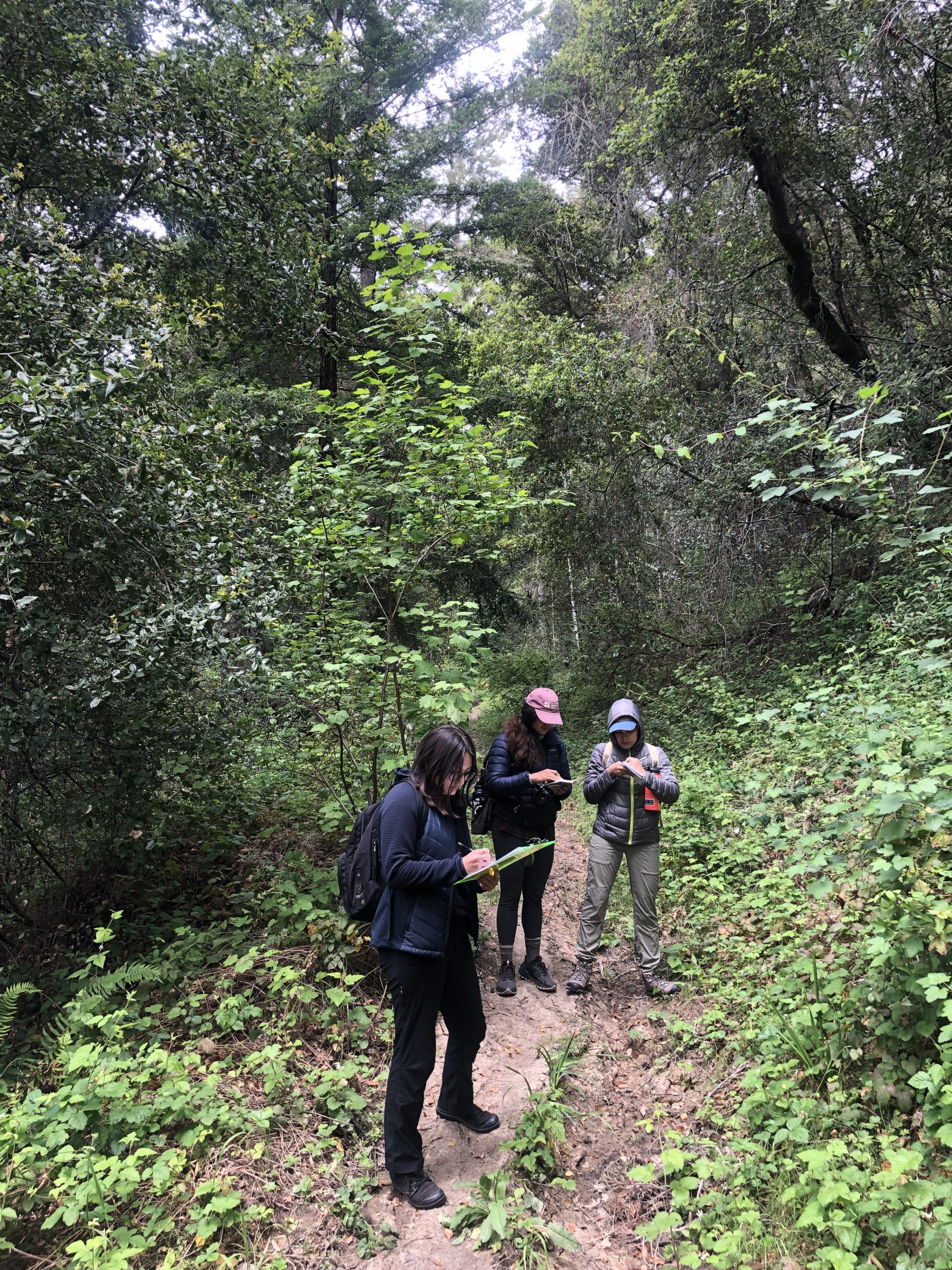
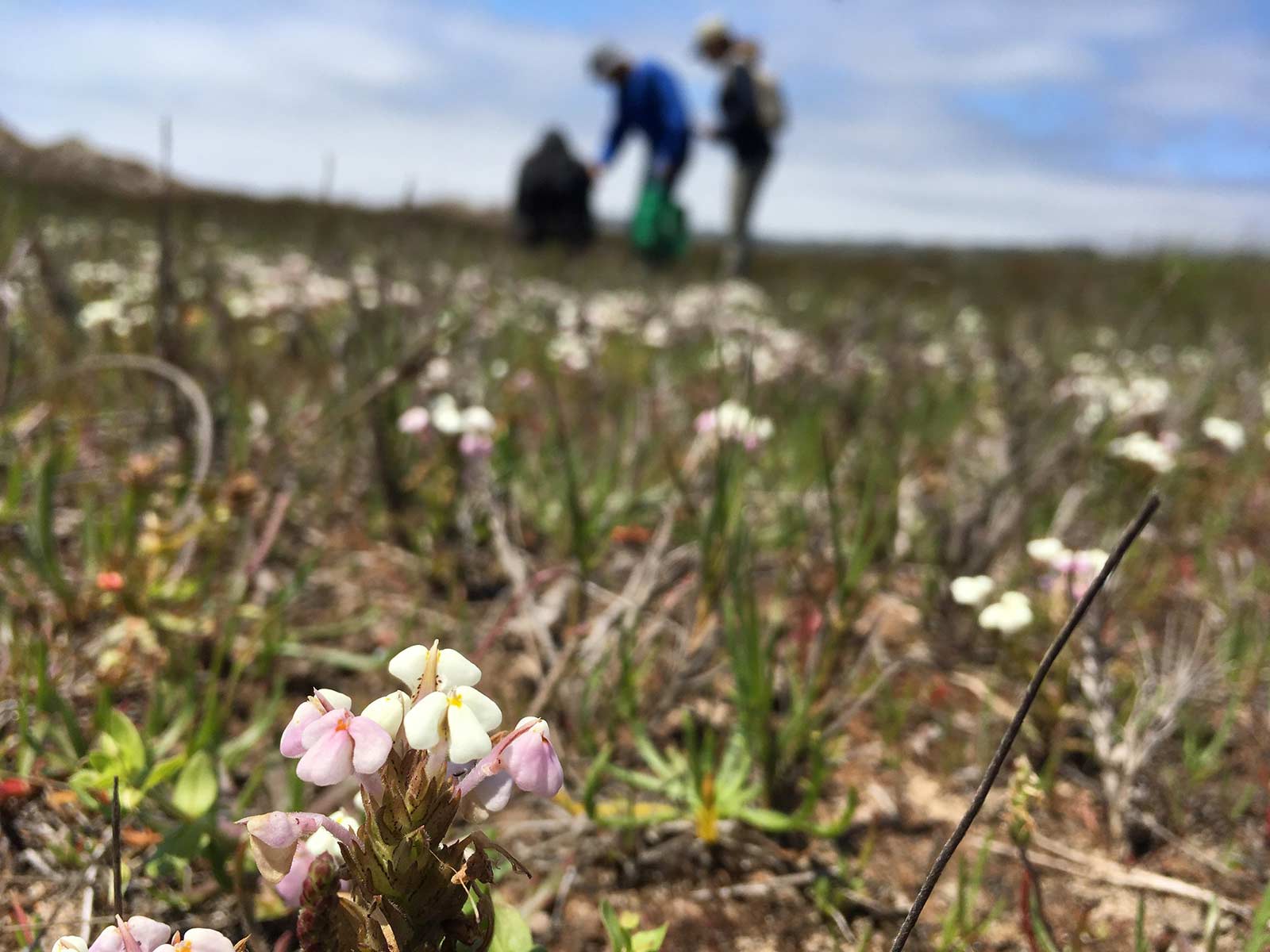
With many of the students taking the internship multiple times, Brett and the Arboretum staff have been fortunate to see students grow and evolve year after year. It’s a time of great change in their lives – which means that the learning experience with the Arboretum can have great impact. Students carry their time with the Arboretum forward. Jonathan Robbins, soon to be a teacher, continues to combine education and nature in his work and studies. Other students have taken positions with local conservation organizations, including Big Sur Land Trust, the California Native Plant Society, and even the Arboretum itself. Still others have taken the academic route, choosing to study plants in graduate programs. For Brett, it has been gratifying to see so many students pursue conservation or other plant-related work. And so the Arboretum continues to do their part to ready the next generation to save plants.